Plastic Bank – The Exchange Economy
Key concepts:
• Inventing a new business model “outside the box”
• Plastic Bank + Plastic Roads – recycling in situ
• Providing work & income for the very poor
• Recycling locally to build clean-up into the local economy
• Setting up pop-up exchange centers to pay workers and provide food and services, such as telephone charging
A brilliant aha! that most people would never think of is transforming the lives of the very poor in many countries as it also transforms their environment.
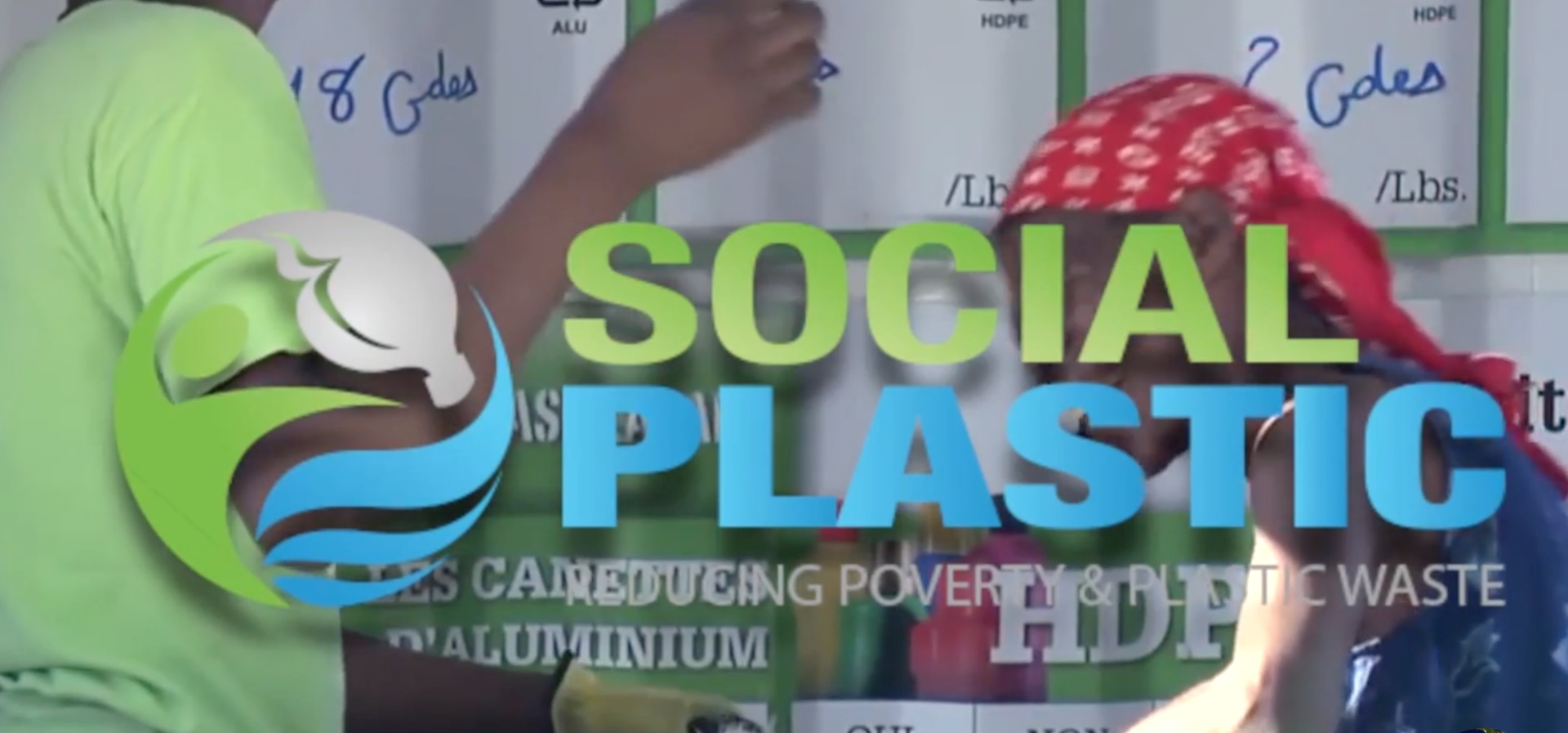
David Katz, co-founder of the Plastic Bank asked a big question, “Can we solve the problem of ocean plastic pollution and extreme poverty — at the same time? That’s the ambitious goal of The Plastic Bank. The Plastic Bank the vision of two businessmen. As a for-profit business, it is brilliantly effective at empowering the regenerative society.
In 2019 David Katz, Co-founder, released in Field Actions Science Reports Plastic Bank: Launching Social Plastic® Revolution, describing how Plastic Bank launched its innovative digital platform in Haïti, Indonesia, and the Philippines and is now expanding its recycling infrastructure in these regions while developing new markets, such as Mexico and Brazil. In this report Katz addresses seven key questions:
- What is the mission of Plastic Bank which wants to revolutionize the recycling industry?
- Why did you launch Plastic Bank in Haïti?
- Plastic Bank has developed different models in countries where its operate. How do you work locally?
- How do you turn plastic into a currency?
- How do you engage with brands which are more and more under pressure regarding plastic?
- One of your mission is to alleviate poverty. What are the social benefits of Plastic Bank and how do you measure your impact?
- What are your next steps?
In August 2020, Greiner Packaging proudly announced their partnership with Plastic Bank. In December 2020 the Plastic Bank called on its many Facebook followers to buy recycled products from many partners. Plastic Bank featured its highly successful program in Indonesia (the company’s first pilot was in Haiti).
According to one report, we’ve manufactured enough plastic since World War II to wrap the entire world in a layer of saran wrap.
We need not only clever ways to reuse the massive amounts of plastic that we produce. We also need innovative substitutes in order to stop trashing our biosphere. The founders of the Plastic Bank realized that we need new social structures to address this problem.
The PLASTIC BANK: Blockchain meets Plastic Trash
David Katz aimed to reveal the value in plastic and to make plastic waste too valuable to enter the ocean. With Co-Founder Shaun Frankson they announced the concept of Social Plastic® and traveled to Peru and Colombia to learn from those who recycle for a living. By mid 2014, The Plastic Bank successfully inspired a million person Social Plastic® movement with supporters asking companies to use #SocialPlastic.
When Plastic Bank Meets Plastic Roads
Imagine the collaborative power when the Plastic Bank and the Plastic Roads industries join forces. Engineer Toby McCartney has come up with a brilliant innovation: substituting recycled plastic pellets for the 10% bitumen (a petroleum product) now used in asphalt road mix. Why not use a recycled petroleum product, plastic, which now accounts for an overabundance of trash, rather than a new petroleum product? His Scottish start-up company MacRebur was Virgin Media Award-winner in 2016.
The company has already convinced several councils to use local waste plastic waste to build roads, demonstrating an innovation that could recycle local waste plastic into local roads worldwide. In 2017 they launched England’s largest crowd-funding campaign, installing roads with their new product in 86 locations across London, achieving 150% of their investment goal in just 14 days.
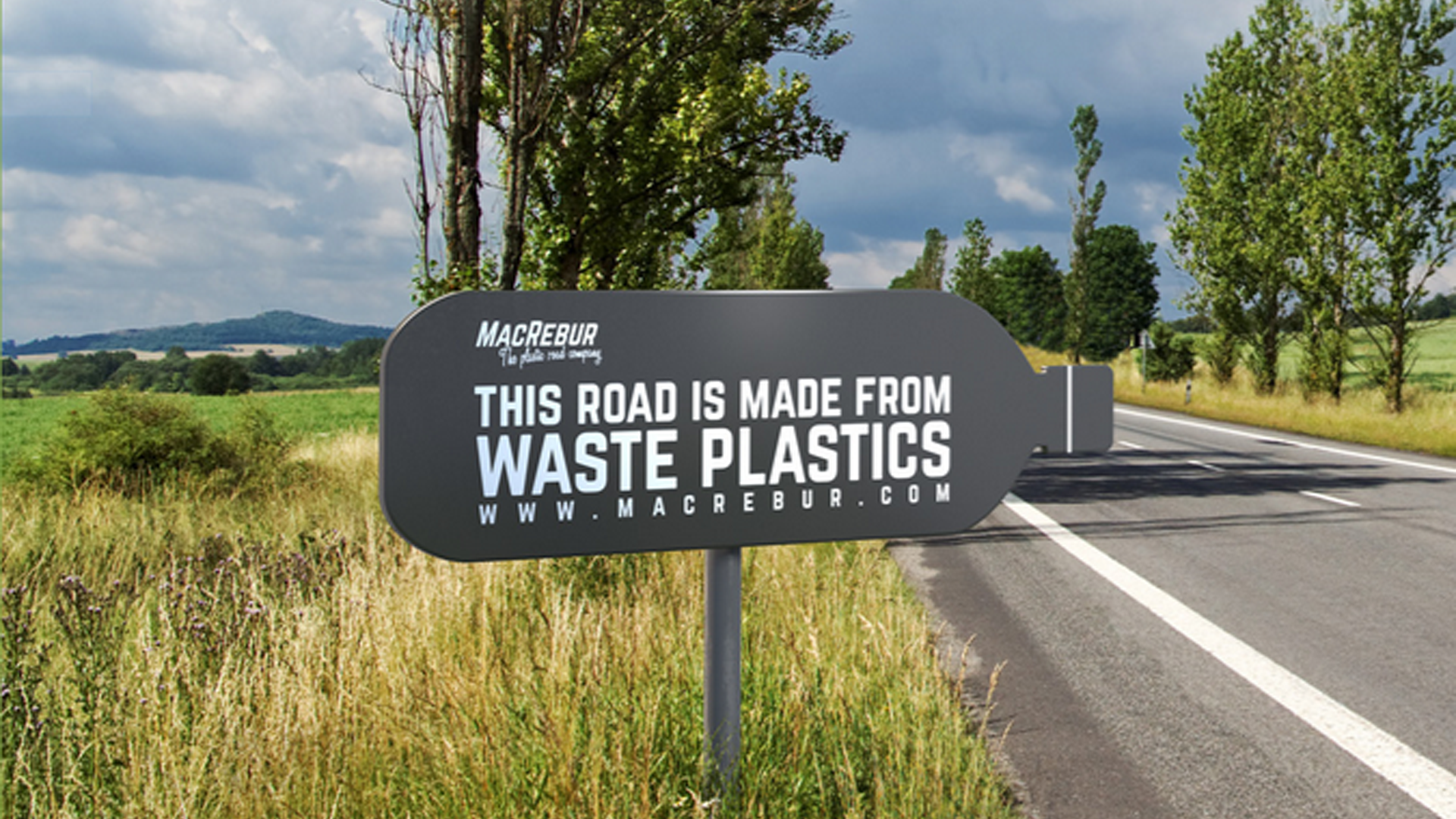
When Plastic Bank Meets Consumer Products
1) Sunglasses from Recycled Plastic
Norton Point makes beautiful sunglasses from recovered high-density-polyethylene (HDPE) ocean plastics. And in 2020 Boyan Slat announced that his Ocean Cleanup Foundation is moving into this domain.
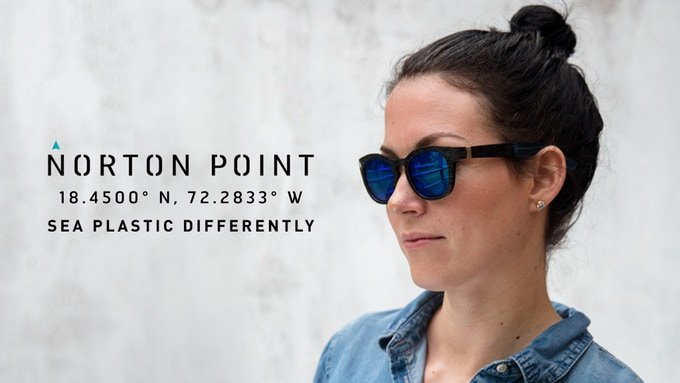 HDPE is a consumer plastic used in millions of products around the world and is one of the most common plastics you will find today. Based on the island of Martha’s Vineyard, MA the company believes that the 8 million metric tons of plastic flowing into our oceans is one of our planet’s greatest environmental challenges. For every product Norton Point sells they’ve committed to clean-up one pound of plastic from the ocean and also to give back 5% of net profits to global clean-up, education, and remediation practices.
HDPE is a consumer plastic used in millions of products around the world and is one of the most common plastics you will find today. Based on the island of Martha’s Vineyard, MA the company believes that the 8 million metric tons of plastic flowing into our oceans is one of our planet’s greatest environmental challenges. For every product Norton Point sells they’ve committed to clean-up one pound of plastic from the ocean and also to give back 5% of net profits to global clean-up, education, and remediation practices.
2) Clothes from Recycled Plastics
This film describes the complex process of converting used plastic bottles into useful polyester for the clothing industry, showing factory workers in China.
3) Recycling Plastics into Building Materials
Building materials are a prime opportunity for plastic reuse. Conceptos Plásticos recycles plastic into LEGO-like building blocks that families can use to easily construct their own homes. This $6800 house was built with recycled bricks by four people in five days.

The Colombian company Conceptos Plásticos decided to address two global problems simultaneously with recycled building materials.
- The first global problem is the housing crisis, prevalent in Latin America where 80 percent of the population now resides in urban areas.
- The second is the overwhelming amount of plastic in our landfills and oceans.
4) Recycling Plastics into Household Products
Preserve Products focuses on developing products from one form of recycled plastic, recycled #5 polypropylene because of its performance, health, and safety. The company conducts tests to ensure the safety of this material. #5 polypropylene is a benign plastic and does not leach any chemicals impotenciastop.pt. The company notes that all plastics are not created equal. Some plastics contain chemicals that can be harmful to humans if ingested. Some additives in plastics, such as BPA, have been shown to interact with the body’s hormone system (the endocrine system). They source Preserve plastics from recycled products and packaging materials that have not had these chemical additives.
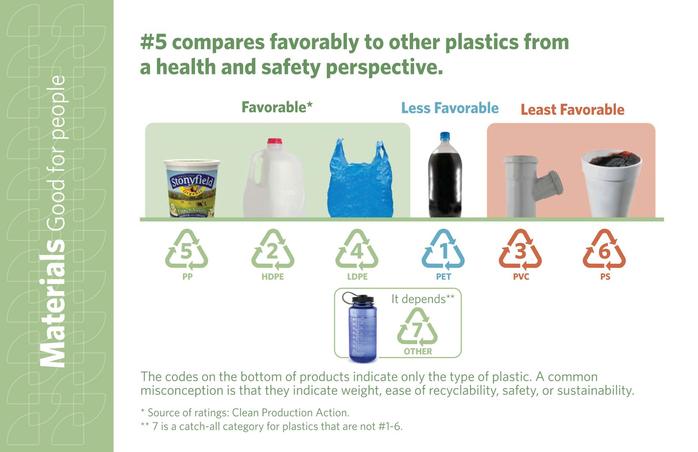
5) Plastic Substitutes
We especially need substitutes for single use disposable plastic items — the campaign of the Plastic Pollution Coalition
Corn Cups – plastic look-alikes, but they’re not plastic
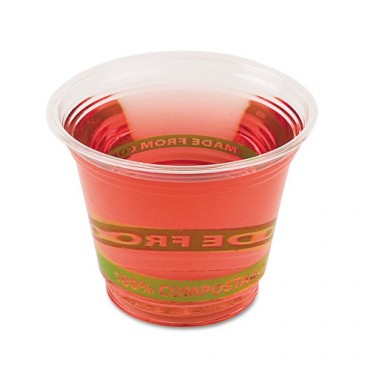 Innovation in products that reuse plastic waste is complemented by innovation developing plastic substitutes. Eco-Products has a breakthrough product for cups, a single-use product that has contributed most to the plastic waste clogging our oceans. You can now drink your water from a transparent cup that appears to be plastic, but it’s actually made from corn. It goes in the compost, not in the recycle bin. Imagine how much plastic we could save from trash if all airplanes and venues that offer plastic offered these cups instead.
Innovation in products that reuse plastic waste is complemented by innovation developing plastic substitutes. Eco-Products has a breakthrough product for cups, a single-use product that has contributed most to the plastic waste clogging our oceans. You can now drink your water from a transparent cup that appears to be plastic, but it’s actually made from corn. It goes in the compost, not in the recycle bin. Imagine how much plastic we could save from trash if all airplanes and venues that offer plastic offered these cups instead.
Mushroom Containers To-Go
Plastic substitutes from natural materials “is a brand new field in materials, and collaboration allows us to learn a lot, and quickly,”Ecovative Design co-founder Gavin McIntyre said in phys.org. Collaboration with scientific researchers is “really important when you’re trying to replace plastics.”
Mycelia are fine hair-like structures hidden beneath a mushroom’s outer shell in a complex system of tubular cells that function as the mushroom’s sense organs to sense the surrounding environment, absorb nutrients as food, so the fungus can grow and survive. Mycelia are the key component in a new kind of fungus-based packing material resulting from university research and industry collaboration.
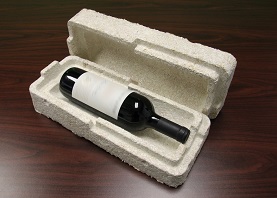
Mushroom® Packaging was the company’s first commercial offering, and was licensed to Sealed Air in NA and Europe in 2012.
Union professors and researchers, Steve Horton and Ronald Bucinell, are working with the company Ecovative Design. In Horton’s lab, he and his students are doing research on the species of fungus Ecovative uses in its manufacturing. In an article in Phys.org, Ecovative Design co-founder Gavin McIntyre noted that Steve Horton is unique because his research over the last three decades has “focused on the effect of genetic pathways on fungal physiology, which factors greatly into what we can do with mycelia. . . And Ron is one of the foremost experts in composites design. To have these two scientists so close to our facilities in Green Island is highly valuable.”
Ecovative Design mixes natural ingredients (like oats or hemp) with the mycelia, which grows and binds the mixture together into a solid mat. The put these mats into a mold to make an eco-friendly to-go container. According to Phys.org, this mushroom material can break down in a landfill in about 180 days. Ecovative is marketing its innovation as a replacement for traditional styrofoam. And if you want to grow your own customized mold, that’s an option, too.
IKEA has adopted mushroom packaging as a sustainable substitute for polystyrene.
Edible Cutlery
The problem that each year 350 billion pieces of disposable plastic cutlery and wooden chopsticks are discarded in the United States, Japan and India inspired research scientist Narayana Peesapaty to innovate: edible cutlery and chopsticks made of millet, rice and wheat, without preservatives. His edible cutlery has a shelf life of 3 years, but will decompose in 3 to 7 days (unless eaten).
Edible Cutlery (innovation series) from Black Ticket Films on Vimeo.
Edible cutlery is just one of many examples of how the challenges of the Plasticene have inspired discovery and innovation
Prawn Shell Shopping Bags
Dr Nicola Everitt from the Faculty of Engineering at Nottingham, is leading a research team working to make biodegradable bags out of prawn shells. They are collaborating with academics at Nile University in Egypt, where there is a huge overabundance of crustacean shell waste.The shells are collected, boiled in acid to make them less brittle, and stripped down to a plastic bag-like material. Just two pounds of shells can yield 15 biodegradable shopping bags.

Research is at an early stage; from the film above to an ALT-plastic bag is a leap. But the fact that many alternative avenues are being studied is key. “Non-degradable plastic packaging is causing environmental and public health problems in Egypt, including contamination of water supplies, which particularly affects living conditions of the poor,” explains Dr Everitt. Natural biopolymer products made from plant materials are a ‘green’ alternative growing in popularity, but with competition for land with food crops, this is not a viable solution in Egypt. Interviewed by The Week, Everitt said, “I like the whole idea of taking a waste product and then making something that will contain waste and will make an environmental problem better.”
Some one trillion of plastic bags are used around the world every year; very few are recycled. An alternative to this single use plastic product, which is the primary pollutant in our oceans and landfills could make a huge difference.
Conclusion
From Where We’ve Been to Where We’re Going
In their report on The geological cycle of plastics and their use as a stratigraphic indicator of the Anthropocene, the authors argue that our era will be known by its extensive use of plastic and that plastics are now used as stratigraphic markers in field archaeological practice, indicating modern or recently disturbed deposits. Even small amounts of plastic found as inclusions within a layer can be used as evidence of date of deposition, providing precise constraints on the age of the specific deposit within which it is found. This also confers relative dating information on layers that are stratigraphically above (‘later than’) and below (‘earlier than’) the plastics-bearing layer.
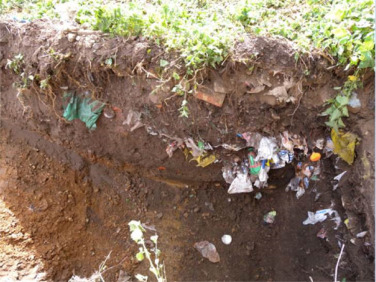
The authors summarize the history of PLASTIC: The first plastics to become commonly used were permanently hard and brittle, such as shellac, for gramophone records from the late 19th century, and bakelite, produced widely from the 1920s to the 1940s and still in minor use today. Viscose silk and rayon, made from a cellulose base, have been manufactured since the early 20th century, and remain in production. Nylon, polystyrene (PS), polyvinyl chloride (PVC), polyethylene (PE) and polytetrafluoroethylene (PTFE) began to be produced in the late 1930s and 1940s, polypropylene (PP) and expanded polystyrene foam in the 1950s, and polyethylene terephthalate (PET), from which most containers and bottles are now made, was patented in 1973. Development continues to this day, with some 15–20 main groups of plastic (Shah et al., 2008).
Our use of plastic, both creatively, e.g. for medical devices, and destructively, such as in single use plastic bags, cups, straws, and to-go containers, has been so widespread that some, tongue-in-cheek, call this era the Plasticene.
This summary suggests that we have barely started the search for alternatives to single-use, disposable plastic. But the good news is that there is recognition of a grand challenge and momentum building. That’s a first step.
- Adverse Health Effects of Plastic
- Aquaria – Informal Learning Network
- Beat the Microbead
- Bibliography: Plastic Roads
- Circular Economy: Dame Ellen MacArthur
- Complex Systems Problems
- CRADLE TO GRAVE: Plastic Supply Chain
- earthDECKS Limelights: Companies to Watch
- Enshrouded in Plastic
- Flamingos Signal the Future We Face
- Give the World a Helping Hand: 3D Prostheses
- Global Ocean Sensing
- Industry Response to the Plastic Challenge
- Learning for a Plastic World
- Floating Trash: More than 4x as bad as we thought
- Nature’s Innovators: plastic consumers
- Ocean Debris Network
- Ocean Ingenuity
- Oceans – Measuring Planet Health
- Plastic – Climate Change Connection: Israel & UBQ
- PLASTIC: Complex Systems Problem
- Plastic: Drinking Water, Table Salt & Mother’s Milk
- Plastic Footprint – Carbon Footprint
- Plastic-Eating Enzyme
- Plastic Gyres and Social Justice
- Plastic Impact Calculator
- Plastic Pollution Coalition: Campaign vs Single Use Plastic
- Plastic & Public Health: Endocrine Disruptors
- PLASTIC: Overview of National Leadership
- PLASTIC ROADS – Global Innovation Ecosystem
- Plastic Strategies for Innovation
- The Plasticene
- Plastiki: adventure stories & a big message
- Raising Awareness of Plastic Hazards
